"Never an illness, nor the absence of grandeur, no, nothing is able to kill the best in us, that kindness, dear sir, we are afflicted with: beautiful is the flower of man, his conduct, and every door opens on the beautiful truth and never hides treacherous whispers. I always gained something from making myself better, better than I am, better than I was, that most subtle citation: to recover some lost petal of the sadness I inherited: to search once more for the light that sings inside of me, the unwavering light." - Pablo Neruda
Maybe by now the story of Kay Williams (pictured above), a formerly incarcerated citizen turned sales-leader for KIA South Atlanta, has piqued your interest about the work of the Office of Re-entry Services at Central Georgia Technical College. If not, take a moment to read about her story here: http://middlegeorgiaceo.com/news/2017/12/formerly-incarcerated-citizen-reaches-kia-sales-heights-cgtc-certificate/
As mentioned near the end of Kay’s story, the Office of Re-entry Services frequently hears of and connects with formerly incarcerated students contributing in meaningful careers, and even entrepreneurial opportunities all across the state afforded to them by coursework from the College. There is more to tell about Kay and others like her, so together with CGTC’s Marketing and Public Relations staff, Re-entry Services has created a blog to feature individual success stories of returning citizens and how mentors, instructors and staff have played a role in the fight against recidivism.
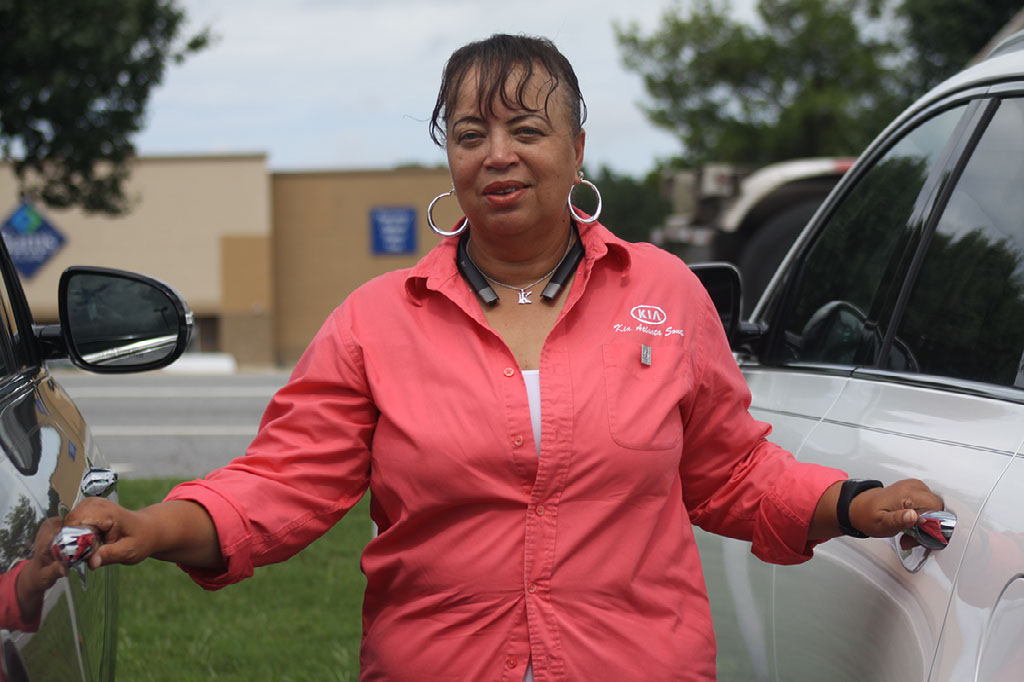
In recent years, lawmakers in Georgia have done more to remember incarcerated citizens. The state has lead a charge to lower recidivism rates by partnering with Central Georgia Technical College (CGTC) and its Office of Re-entry Services to provide resources for education and training, giving the College a directive to support them in returning to society.
Although enrollment knocks every day at the College, it takes much more to be heard through the metal bars of a prison.
Surrounded mostly by thought and seemingly endless amounts of time, inmates at Pulaski State prison, like Williams in the late-2000s, first learned of certificate opportunities and vocational programs offered by CGTC from instructors and mentors.
Such was the encouragement of Carla Best, then instructor, currently project manager for the Office of Re-Entry Services at CGTC. When Kay was assigned as an instructor’s aide following the completion of her certificate in Business and Customer Service Technology (BCST), Best encouraged her to continue to make beneficial life choices.
“We had daily conversations on life and making the right choices that will benefit us; her taking the BCST program was one of them,” Best said. “I encouraged Kay and all of our students to use what they had learned to make better choices, to take some knowledge, some skill, or some behavior that they learned and present it to a potential employer, to make you stand-out, and be remembered.”
Before being remembered, there was a lot Williams needed to forget. Programs on the inside helped her manage and offset the behaviors that led her there.
Certificate programs are offered in correctional facilities across the state of Georgia, but it wasn’t until the last few years that a distinct push was made to promote what they are doing for specific incarcerated citizens.
Although Kay’s story begins prior to Gov. Deal’s first term in office, which coincided with prison reform, it still presents an example of what can become of a citizen when they re-enter society, even when society doesn’t always make it easy.
Whether socially or systematically, the stigma is often perpetuated that having served even the shortest time in prison is equal to the conviction a life sentence. For many previously incarcerated citizens, regardless of the time they actually served, they will likely never be seen as who they want to become, much less who they were before their errors. The image is often perceived as branded to their identity, and in many cases becomes a challenge to rebuilding their life, finding a career, contributing to society, and even worse, motivation for any of it.
“I believe we all fear change as well as the unknown,” said Best, speaking on how she addresses public opinion on prisoner re-entry to the incarcerated citizens she works with. “There are a lot of unknowns when you face change, such as being released from prison after many years of incarceration. I always acknowledged this ‘stigma’ exists and encouraged my students to just do the right things; the things that will change an employer’s mind. In return, their own (the prisoner’s) mind will begin to change.”
No amount of courses, or glossy certificates will take any prisoner’s sentence away, but they might give someone’s story a new paragraph.
Yes, Kay committed a felony. She went to prison and unequivocally understands her wrongdoing. She served the time required of her, and while doing so, she maintained a clean discipline record. She was even asked to be a mentor to new prisoners.
The state, and CGTC place tremendous value on the potential in citizens like Kay, and through education, hope they provide a way to break the cycle of return.
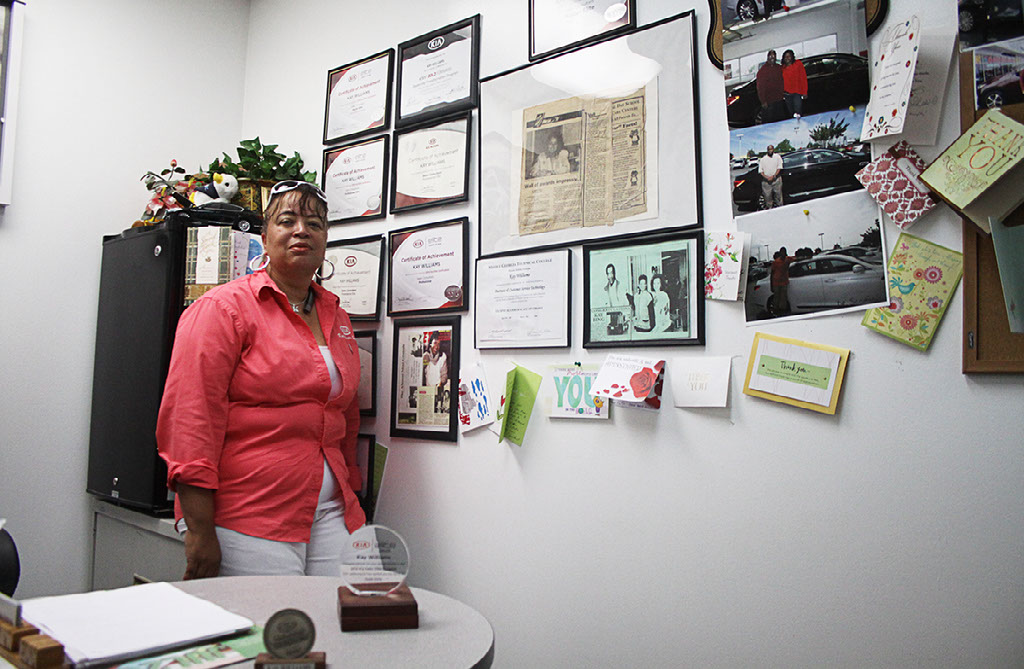
Effective transition is the name of the game. More specifically, in the state’s Justice Reinvestment Initiative (JRI) crafted early in the decade, and its policy, Georgia’s Prisoner Re-Entry Initiative (GA-PRI), their work is outlined to “develop broad scale reforms that will improve outcomes for returning citizens.”
Re-entry Services at CGTC is a division of commitment to the educational and training component of that reform and streamlines the re-entry transition from a workforce perspective. With educational programs, incarcerated citizens can start fresh learn their way to a meaningful career. The full expectation is that many will be released to become contributing members of society again; and the Office of Re-entry Services believes Williams and several like her are positioned to be a success story of that expectation.
When leaving prison, the difficulty finding work can feel just as cold as the metal bars. Many times, a person’s inability to land a job leads them back into the system.
Brandon Marshall found himself exactly at that point when he was released from prison in November of 2013, after serving ten years for being an accessory to a robbery.
“The thought that I may be going back, or that I won’t make it will always be with me,” said Marshall, who has reached four years since his release. As a male, reaching four years without re-arrest is a feat. Georgia's recidivism rate, per the GA-PRI, suggests a 50 percent likelihood exists that after three years he would have been re-arrested, and 29 percent for re-conviction.
Marshall now owns his own barbershop and salon in the downtown area of Sylvester, Ga., adjacent to railroad tracks and a farmer’s market. His shop is busiest on Fridays and Saturdays, back-to-school weeks in August, and holidays. Everything from the man-cave inspired décor on the Cheerwine-red walls, to the shiny black and silver barbering chairs has been gathered and purchased slowly since his release. There are even his two pet parrots; females whom he never gave names. The parrots, along with the sports banter from the television provide an interesting soundtrack while clients wait.
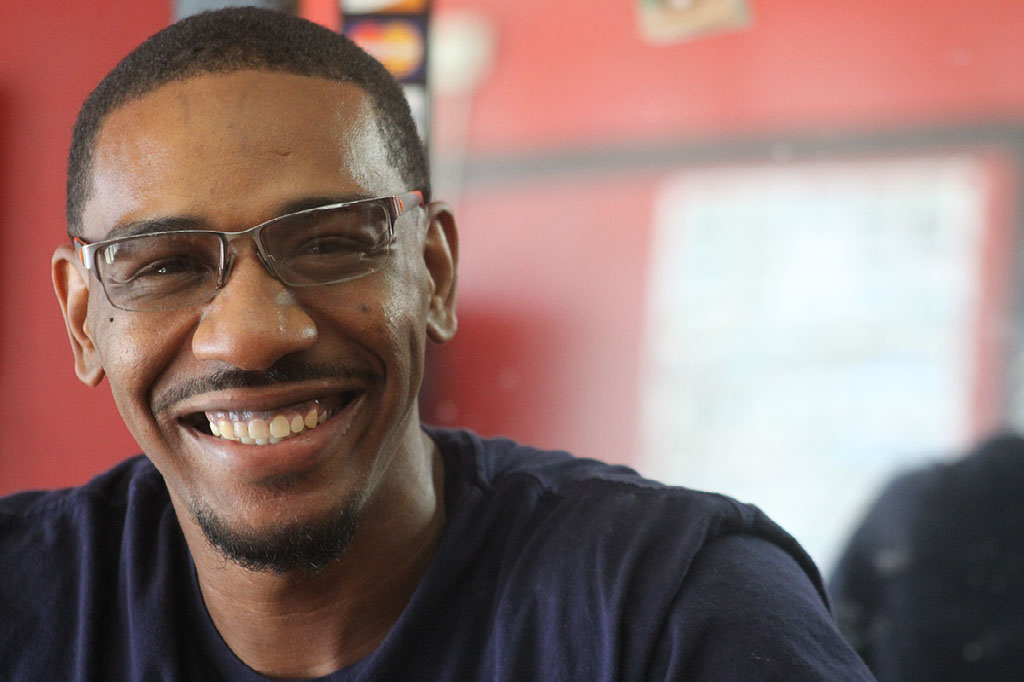
As an incarcerated citizen, he took part in the Barbering certificate program, a program he came to with no artistic ability or interest.
“It was my mom’s influence. The assessment and skills test made me eligible to take courses, but she was pushing me to get into the course,” he said, adding that the deputy warden was also influential.
At Ware State prison where Marshall served, the Barbering program, led by instructor Michael Newton, is one of few offering an intriguing path to employment compared to others; an opportunity to get a new start working for oneself.
“I empower them. I tell them you are either the reason you make it, or the reason I put you out,” Newton said. His program is competitive, and Marshall knew daily that nothing about the program would be given to him. He also knew that as he was, “getting short,” or coming up on his release, and, “not being able to carry anything out with him,” in terms of employability, could potentially bring him to recede.
Marshall’s mother extended the capital toward his shop in 2014 and he has been putting in the hours since. Occasionally, he even gets to cut the hair of people he used to associate with.
“I still see the same mentality. With my new perspective, though, it all looks immature and dull to me. I can see my evolution in it all. I can see how far I came looking at my old peers,” he said.
Even still, Marshall says dealing with people can be the hardest part of his work now, but that with clippers in-hand, he can, “get lost in a cut.”
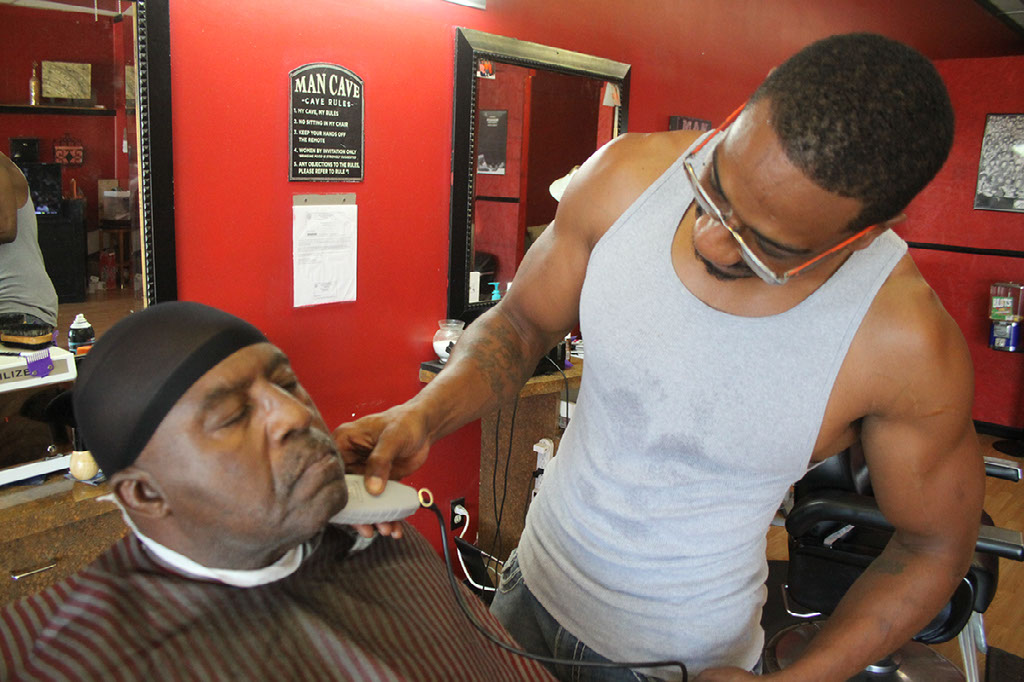
Marshall left prison at a time when data gathered by the GDC and JRI had indicated that his likelihood to recede would have been the highest for his demographic during Gov. Nathan Deal’s administration, but through the availability of the program and instructors, he not only has lowered the prison population in his absence, but intends to keep out of it in his return.
Being a part of a statistic – positive or negative - is not really the end-game for Brandon or Kay, and when both reflected on what their stories could mean for currently incarcerated citizens, should they be given an opportunity to speak to them, they knew there would be no need to mention numbers.
Re-entry programs and their success have largely existed in terms of figures and funding. Until now, and until them, they weren’t given faces.
The next face of re-entry, like many, had to rely on help that wasn’t attached to a program to kick-start her success.
“When I first came home, my brother let me live in his closet. That’s how desperate we are when we come home, we’ll sleep anywhere,” said Tara Gazzulo, a formerly incarcerated citizen who completed a certificate in Design and Media Production in 2010 at Pulaski State Prison. She agreed with Kay and Brandon that some level of extended support from a friend, family member, even former instructors is needed post-release.
Thankfully, the closet arrangement was not permanent. Tara landed a job with a print company shortly after release, and since then has only seen thirty days of work outside of the graphic design industry. She also upgraded the closet to a condo with her husband.
In the years that followed, Tara gained experience with graphic design and ad placement companies around the Atlanta area until she began her own small graphic design business, Grafix. When she is not working her day job, she designs business cards, advertisements, and book covers.
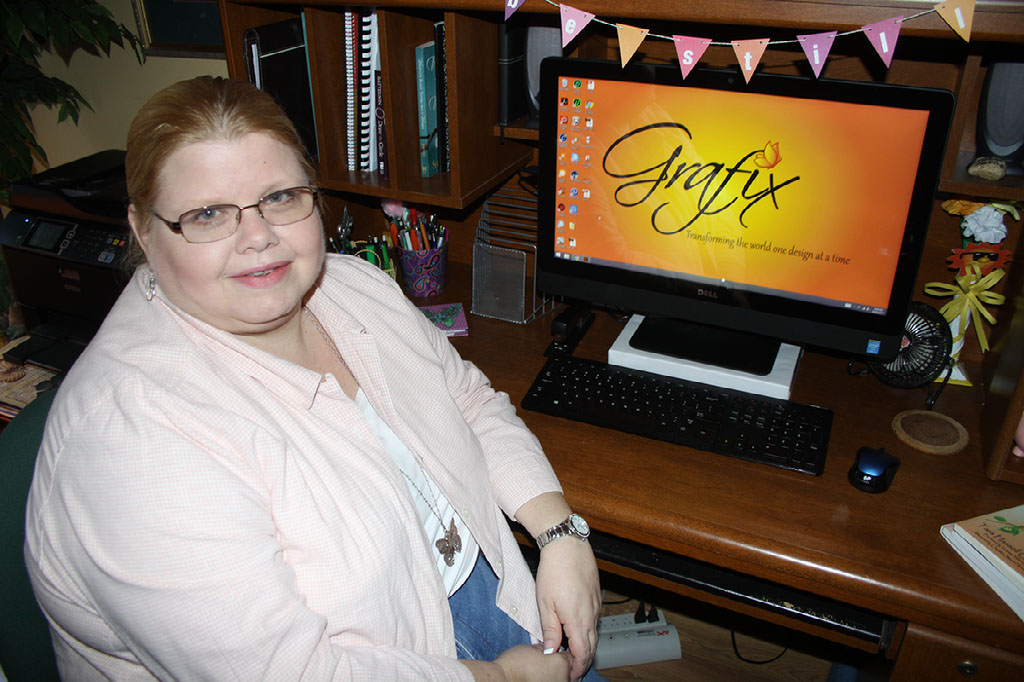
Tara actively maintains contact with CGTC adjunct instructor, Woodrow Whipple, who teaches at Pulaski State Prison. The GDC named Whipple its 2017 Vocational Instructor of the Year last summer, in large part due to his more than 20 years of service to incarcerated citizens.
During his nomination period, Whipple told the College he felt like he didn’t do a whole lot to deserve the recognition, saying he just opens a door for them to walk through, a statement Tara disagreed with.
“All along the way he said he just opens the door, but I say all the time that he built the door,” she said. “He literally gives us as much room as we need, as much encouragement as we need, and as much as we can handle.”
Tara said she remembered her inmate number, but in recalling it, also said she was never referred to it by Whipple in his classroom.
“I was never a number,” she said.
It was those little distinctions that were “huge,” as she put it. Her expectation of what prison would be like never included this level of instruction, kindness, or grace. But on the inside, she realized nothing was owed to her, kindness wasn’t a guarantee, but that having experienced it, she is grateful.
She wrote a letter to Whipple a while back, and in it thanked him for igniting a passion, guiding her practice of it, and most of all, treating her as a person even when she found that hard to come by.
“I belonged to everybody but myself,” she said speaking to the type of person she was that led her to prison. “I spent all my time doing everything for everybody else. I spent so much time drawing attention to myself for what I was doing to others, that I ended up with my charges.”
What started out as a family and children services case turned criminal. The state of Georgia charged her with cruelty to children related to in-home healthcare treatment of her daughter, as an IV became infected under her care. She entered a no contest plea and served nearly seven years of an eight-year sentence.
The severity of the crime nor the longevity of the sentence has necessarily been a stipulation to whether or not an incarcerated citizen can take part in re-entry programs, courses, or on-the-job training (OJT). Take for instance, Ladji Ruffin, a formerly incarcerated citizen who served 20 years for killing his mother, was released in 2016. The Macon Telegraph told the story of how the Library of Congress certified him in braille transcription, a service provided at Central State Prison. His work as a braille transcriptionist, along with that of “murderers, sex-offenders and other criminals, and former cops” as the Atlanta Journal Constitution reported in November 2017, shows what an incarcerated citizen can become if given an opportunity, and even how it saves the state money.
If it sounds complex, there is a reason.
The path to re-entry is often cluttered; an arduous trek filled with flora in decay, twisted vines of guilt, boulders of regret, and canopies of shame that blotch even the brightest light. Each obstacle impedes the way up to a sustainable life, a meaningful career. Rightly so, none of these citizens, including Tara, expected to climb the mountain of re-entry without properly learning to navigate its terrain. The ground may be uneven, but the punishment of the climb is just.
In the case of Tara, she committed a crime for which her conviction and sentencing put her at a starting base well below the rare air of success. But, if these tax-payer funded educational opportunities, and the investment made into their lives by professional instructors, coupled with the guidance she and others received in this transition are designed to work, heal, and make-whole, then by nature, re-entry is less of a return expedition and much more of a first ascent, never-before-seen, pioneering expedition into life’s long excursion.
Re-entry is not a comeback to the same-old situation, it is an un-chartered discovery of self-efficacy.
What good can reasonably be expected of a citizen to mentally prepare for, actively return to, and simply make-do in a life that afforded nothing more than self-gratification, loss, pain and a landslide of deep and dark feelings?
As such, it’s not rare that while incarcerated, Tara and others walked daily through a fog of ineptitude, one that creeps up from valleys and low places, treacherous even, so dense that it feels as if they had to take two steps backward to take one step forward. On the inside, it sounds like self-doubt and fear, but out here, deep in re-entry, it feels like progress.
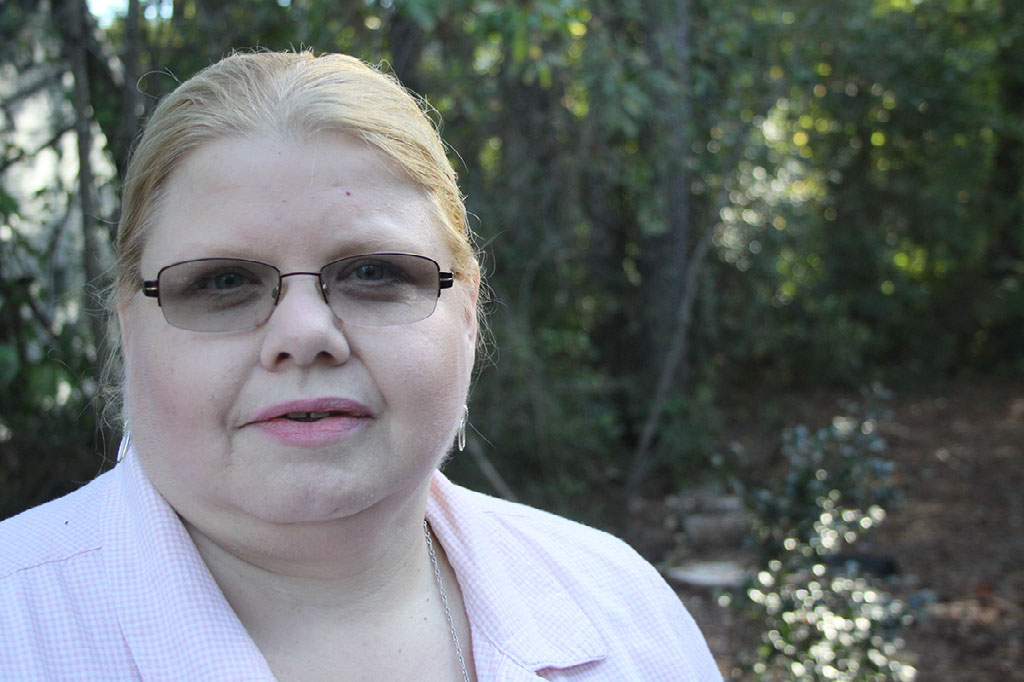
“It’s been a stepping stone for me; a time to refocus,” Tara said of the whole thing, from incarceration, to technical education, to re-entrance.
Above the fog is where Tara found purpose, where she said she believes there is real change; a place where she went through a metamorphosis of sorts.
One of the perks of designing books for publishers, is being able to get her own book published. Becoming a Butterfly…a treasury of thoughts, published in 2016, includes a foreword from a fellow formerly incarcerated citizen. In the book, Tara speaks to her self-transformation, once saying that, “when you lose everything, everything you gain is a blessing.” The book is largely centered around her Christian faith and speaks to her change and transformation while on the inside. She views herself as a “beautiful butterfly”, who was once a caterpillar deserving of both the entrapment of the cocoon and the enthrallment of the transformation.
“When a butterfly comes out of the cocoon it takes a while to realize it’s not a caterpillar any more, to realize it has wings, and can fly,” she said.
There is a reason the butterfly can fly; it’s what goes on in the cocoon. Like the caterpillar, she had no real understating that reform was going on around her to help her emerge and surface as a contributing citizen.
“Now I do know,” she said of what taxpayers, lawmakers, and the whole thread of criminal justice reform and re-entry was doing for citizens like her. “When you are on the inside you hear all these rumors about what (the government) is doing on prisoner’s behalf and you don’t believe that’s really happening.
Tara said after she got home, it sunk in that a lot of the reform is true.
Still, the tragedy of a butterfly is that it spends most of its life as a less-than desirable larva, then sulks in the pupal stage until emerging from the chrysalis, delicate, mobile, and full of color. Tara’s response to her own “pupil” stage, emergence and brevity as a new creature, is that, even though the new-life may be for a short time, it’s the opportunity to fly and use the wings that is great.
“Once it (the butterfly) learns how to use them, it flies. I’ve learned how to fly and I’m not going to let those voices around me stop me. I can’t let the fear of what other people say about me stop me anymore,” she said.
The courses offered through Re-entry Services and CGTC may come with certain qualifications to participate – being close to release, meeting test scores, passing instructor interviews, to name a few - but the opportunity to better oneself is without prerequisite.